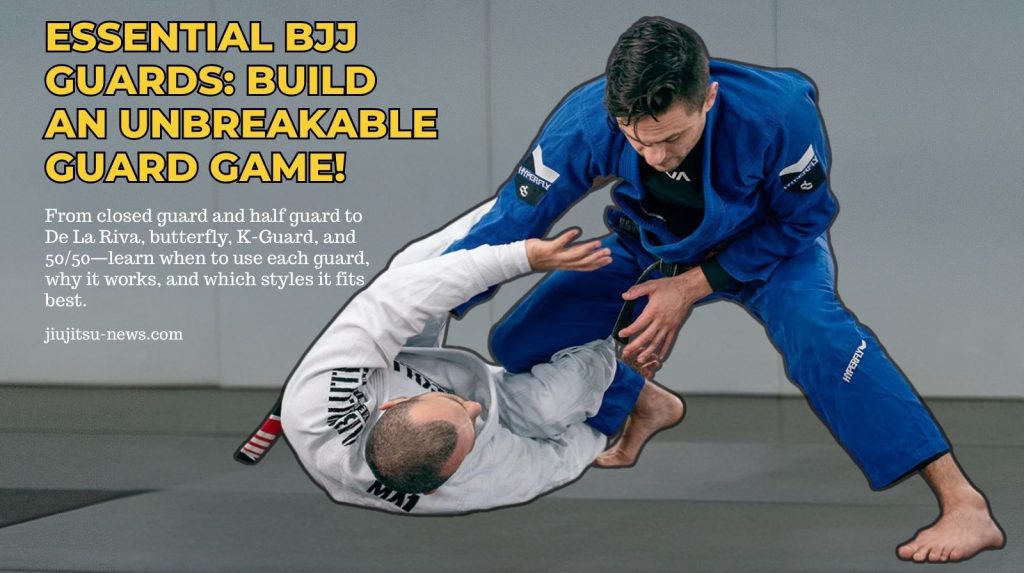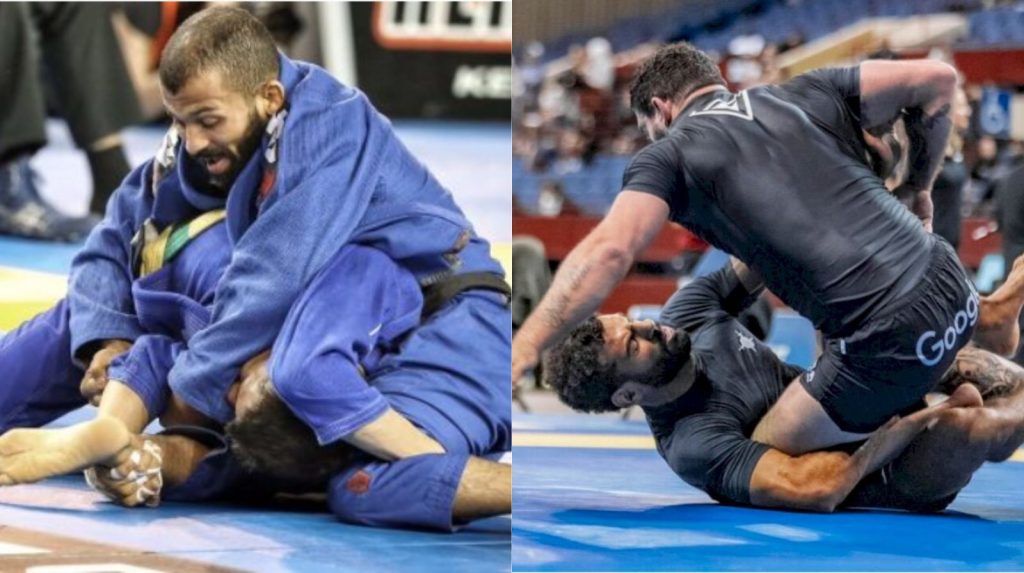The Ultimate Guide to Starting Jiu-Jitsu
Everything you need to know to begin your BJJ journey with confidence. From your first class to blue belt—this guide covers it all.
Why Train Brazilian Jiu-Jitsu?
BJJ is more than a martial art—it’s a complete physical and mental discipline that transforms how you move, think, and handle pressure. Here’s why thousands of people start every year.
Practical Self-Defense
BJJ emphasizes technique and leverage over raw strength. Smaller practitioners can effectively defend themselves against larger opponents using proper positioning and submissions.
Full-Body Conditioning
Training builds functional strength, cardiovascular endurance, flexibility, and coordination. Research shows BJJ improves muscular strength, aerobic capacity, and body composition.
Mental Health Benefits
Studies demonstrate significant improvements in stress reduction, focus, and mental resilience. BJJ releases endorphins and regulates stress hormones like cortisol.
Problem-Solving Under Pressure
Often called “physical chess,” BJJ develops strategic thinking and adaptability. You’ll learn to stay calm and make decisions when someone is actively trying to submit you.
Community & Brotherhood
BJJ academies foster tight-knit communities. Training partners become friends who support your growth both on and off the mat.
Accessible to Everyone
Unlike striking arts, BJJ doesn’t require prior athletic ability. Age, size, and fitness level don’t matter—technique is the great equalizer.
What to Expect in Your First BJJ Class
Walking into your first class can feel intimidating. Here’s exactly what happens so you can show up prepared and confident.
Arrival & Warm-Up (10-15 minutes)
Arrive 10-15 minutes early to meet the instructor and get oriented. Class begins with light jogging, hip escapes (shrimping), forward/backward rolls, and mobility drills. These movements are fundamental to BJJ—you’ll do them thousands of times.
Technique Instruction (20-30 minutes)
The instructor demonstrates 1-3 techniques step-by-step. As a beginner, you might learn basic positions (guard, mount, side control), a simple sweep, or an escape. Pay close attention—the instructor explains both the “how” and the “why.”
Drilling with a Partner (15-20 minutes)
You’ll pair with another student (often a fellow beginner or a higher belt who will guide you) to practice the techniques. This is slow, controlled repetition—not fighting. Ask questions if anything is unclear.
Live Sparring / Rolling (Optional for Beginners)
Most academies don’t require beginners to spar on day one. If you do participate, expect to feel lost—that’s completely normal. Focus on staying calm, breathing, and applying what you learned. You’ll likely get submitted repeatedly. Welcome to BJJ.
Cool-Down & Closing
Classes typically end with stretching and a line-up by belt rank. You’ll shake hands with your training partners and thank the instructor. This ritual reinforces the respect central to BJJ culture.
Pro Tip: Don’t worry about knowing anything. The only expectation for your first class is to show up, pay attention, and try your best. Everyone started exactly where you are now.
How to Choose the Right BJJ Academy
Not all gyms are created equal. The right academy can make or break your BJJ journey. Here’s what to evaluate:
1. Instructor Credentials
Look for instructors with verifiable lineage and recognized affiliations (IBJJF, major teams like Gracie Barra, Alliance, etc.). A black belt is ideal, but teaching ability matters more than competition accolades. Ask about their experience and how long they’ve been instructing.
2. Gym Culture & Community
Visit the gym and observe. Are students welcoming? Do higher belts help beginners? Is the atmosphere supportive or ego-driven? The culture should feel encouraging, not intimidating. Check Google reviews and testimonials.
3. Cleanliness & Safety
BJJ is a close-contact sport—hygiene is non-negotiable. Mats should be cleaned daily with disinfectant. The facility should be well-maintained with adequate space for training. A dirty gym is a red flag.
4. Class Schedule & Structure
Does the schedule fit your lifestyle? Look for gyms offering fundamentals classes for beginners, not just advanced sessions. Ideally, you want to train 2-3 times per week minimum. Unlimited membership options provide the best flexibility.
5. Student Diversity
A healthy gym has a variety of belt levels. All white belts? The gym may struggle with retention. All advanced belts? They may not cater well to beginners. A good mix indicates effective teaching across all levels.
Action Step: Visit at least 2-3 gyms before committing. Most offer free trial classes. Pay attention to how you’re treated as a newcomer—that’s how you’ll be treated as a member.
Essential Gear for BJJ Beginners
You don’t need much to start, but the right gear makes training safer and more comfortable. Here’s what to buy (and what to skip).
Must-Have Gear
| Item | Purpose | Budget Range | Notes |
|---|---|---|---|
| BJJ Gi (Kimono) | Required for gi training | $60-150 | Pearl weave (350-450 GSM) is ideal for beginners. White, blue, or black for competitions. |
| Rash Guard | Worn under gi or for no-gi | $25-70 | Prevents mat burn and skin infections. Compression fit recommended. |
| Grappling Shorts | Required for no-gi training | $30-60 | No pockets, zippers, or buttons. Must allow full range of motion. |
| Mouthguard | Protects teeth during sparring | $5-40 | Boil-and-bite works fine. Custom molds are more comfortable. |
| Flip-Flops/Sandals | Wear off the mat (hygiene) | $10-20 | Prevents bringing dirt onto the mats. Required at most gyms. |
Nice-to-Have Gear
- Spats/Compression Pants: Full-leg protection for no-gi, worn under shorts or alone ($30-60)
- Athletic Tape: Protects fingers and toes from joint strain ($5-10)
- Knee Pads: Helpful if you have sensitive knees or train on harder surfaces ($20-40)
- Gear Bag: Separate compartment for sweaty gear is ideal ($30-80)
- Second Gi: Essential once you’re training 3+ times per week—gis need time to dry
Gi Sizing Tips
BJJ gis use a different sizing system (A0, A1, A2, A3, etc.). Most brands run slightly different, so always check the specific brand’s size chart. The gi should fit snugly without restricting movement—not too tight, not so loose that opponents can grab excessive fabric.
Important: Don’t buy expensive gear right away. Start with budget-friendly options until you’re sure BJJ is for you. Many beginners quit within the first 3-6 months—no need to invest $200 in a premium gi on day one.
8 Fundamental Techniques Every Beginner Must Learn
These movements and positions form the foundation of your entire BJJ game. Master these before chasing fancy submissions.
Hip Escape (Shrimp)
The most important escape movement in BJJ. Creates space when you’re pinned. You’ll do thousands of these—learn to love them.
Bridge (Upa)
Explosive hip movement used to off-balance opponents from mount. Combined with hip escapes, this is your primary escape toolkit.
Closed Guard
Your legs wrapped around opponent’s waist. A neutral/offensive position where you can attack with sweeps and submissions while staying relatively safe.
Guard Passing
Getting past your opponent’s legs to establish a dominant position. Learn basic passes like the knee slice and torreando.
Side Control
A dominant position where you’re chest-to-chest with your opponent, perpendicular to their body. Learn to maintain pressure and transition to mount.
Mount
The most dominant position—sitting on your opponent’s torso. From here, you can attack with submissions or transition to back control.
Armbar from Guard
A fundamental submission attacking the elbow joint. Often the first submission beginners learn. Applicable from multiple positions.
Triangle Choke
A powerful choke using your legs from guard position. Demonstrates the leverage principles that make BJJ effective for smaller practitioners.
7 Common Mistakes White Belts Make (And How to Fix Them)
Every beginner makes these errors. Identifying them early accelerates your progress significantly.
1. Holding Your Breath
The Problem: When stressed or focused, beginners unconsciously hold their breath. This causes rapid fatigue and makes you tense up—the opposite of what you want.
The Fix: Consciously focus on breathing deeply and regularly, especially in bad positions. Exhale when executing techniques. If you’re gassed after one roll while purple belts look fresh, breathing is likely your issue.
2. Using Strength Over Technique
The Problem: Muscling through positions instead of using proper technique. This works temporarily but slows long-term development and exhausts you quickly.
The Fix: When you catch yourself straining, pause and think about the technique. Ask yourself: “What should I be doing here?” Prioritize smooth, controlled movements over explosive force.
3. Leaving Arms Extended
The Problem: Reaching or posting on the ground with arms extended exposes you to armbars and kimuras. This is how white belts get submitted repeatedly.
The Fix: Keep your elbows tight to your body. When in someone’s guard, hands go on their hips, not the mat. If your arm is extended, it’s vulnerable.
4. Neglecting Defense
The Problem: Focusing only on attacking while ignoring escapes and defensive positioning. You end up getting submitted before you can attempt anything offensive.
The Fix: Spend deliberate time learning escapes from mount, side control, and back control. A strong defense allows you to relax and think, creating opportunities to attack.
5. Not Controlling Head Position
The Problem: Allowing opponents to control your head through collar grips or cross-faces. In BJJ, where the head goes, the body follows.
The Fix: If someone grabs your collar, strip the grip immediately. If someone is cross-facing you, fight to recover head position. Never let people casually touch your head.
6. Falling Over Unnecessarily
The Problem: When feeling off-balance or uncomfortable, beginners often sit down or fall over without being swept. This gives up position for free.
The Fix: Fight to stay standing or on top. If you get swept, immediately work to recover. Developing a base (the ability to maintain balance) takes time but is essential.
7. Not Tapping Early Enough
The Problem: Ego prevents tapping, leading to injuries. Submissions happen to everyone at every level—there’s no shame in tapping.
The Fix: Tap early, tap often. A submission caught is a learning opportunity, not a failure. Training injured sets you back far more than any tap.
Mindset Shift: Every mistake is data. Instead of feeling frustrated when you get submitted, ask yourself (or your partner): “What did I do wrong? How can I prevent that next time?”
BJJ Gym Etiquette: Unwritten Rules You Need to Know
BJJ has a strong culture built on respect. Following these unwritten rules helps you integrate into the community and shows you’re serious about training.
Hygiene (Non-Negotiable)
- Wash your gi after every training session. No exceptions. A dirty gi smells bad and spreads bacteria.
- Trim your fingernails and toenails. Long nails cause scratches and infections.
- Shower before class if possible, especially if coming from work or other physical activity.
- Don’t train if you’re sick or have any skin infections (ringworm, staph, etc.). You’ll infect everyone.
- Use deodorant. Body odor in close-contact training is disrespectful to your partners.
On the Mat
- Bow or greet when entering/exiting the mat. This acknowledges the training space and tradition.
- No shoes on the mat. Ever. Wear sandals to the bathroom and remove them before stepping on.
- Be quiet when the instructor is teaching. Side conversations are disrespectful and disruptive.
- Line up by belt rank at the start and end of class. White belts at the end.
- Let higher belts drill first unless they offer otherwise. This is tradition, not ego.
During Rolling (Sparring)
- Fist bump before and after every roll. It signals respect and that you’re training, not fighting.
- Always respect the tap. Release immediately. Trust is the foundation of live training.
- Control your intensity. Match your partner’s experience level. Don’t spaz or go 100% against beginners.
- Be aware of your surroundings. Don’t crash into other rolling pairs. If space is tight, stop and restart safely.
- Don’t coach during rolls unless someone explicitly asks. It’s condescending.
General Respect
- Address instructors appropriately. Black belts are often called “Professor.” Other instructors may be “Coach.” When in doubt, ask or observe.
- Be on time. If you’re late, wait at the edge of the mat until acknowledged.
- Help clean the mats if asked or if it’s customary at your gym.
- Don’t be a know-it-all. Even if you have experience in other martial arts, approach BJJ with humility.
The BJJ Belt System: Your Progression Roadmap
Unlike other martial arts, BJJ promotions are notoriously slow. It takes an average of 10+ years to reach black belt. Here’s what to expect at each level.
White Belt (1-2 Years)
The beginning. Focus on survival, basic positions, fundamental movements, and developing mat awareness. You’ll get submitted constantly—embrace it as learning.
Blue Belt (2-4 Years)
Your first major milestone. You have solid fundamentals and can apply techniques effectively. You’re developing your own style and can handle most white belts.
Purple Belt (4-5 Years)
The “intermediate” belt where you refine techniques and develop deeper strategic understanding. You’re beginning to see the connections between positions.
Brown Belt (5-7 Years)
Near-mastery level. You’re polishing techniques to perfection and often helping teach. Your game is cohesive and efficient.
Black Belt (10+ Years)
Technical proficiency across all aspects of BJJ. But even black belts continue learning—the journey never truly ends.
Important: Time estimates vary wildly based on training frequency, academy standards, and individual aptitude. Some people earn blue belt in 1 year; others take 3+. Focus on learning, not the belt around your waist.
How to Accelerate Your Progress
- Train consistently: 3-4 times per week is optimal. 2 times minimum. Sporadic training leads to sporadic progress.
- Take notes: Write down techniques after class. Review them before your next session.
- Watch instructionals: Supplement class with online content from respected instructors.
- Compete: Competitions expose holes in your game and accelerate learning (even if you lose).
- Ask questions: Don’t pretend to understand if you don’t. Good instructors appreciate engaged students.
- Roll with everyone: Higher belts teach you what’s possible. Fellow white belts teach you to problem-solve.
The Beginner’s Mindset: Mental Keys to Success
Your mindset determines whether you quit in 3 months or train for a lifetime. Here’s how to approach BJJ mentally.
Embrace Being Bad
You will be terrible at BJJ for a long time. Accept it. Every expert was once a clueless white belt getting smashed. The only way out is through—show up, get humbled, learn, repeat.
Don’t Compare Yourself to Others
Someone who started after you will inevitably progress faster. They might be younger, more athletic, or simply able to train more. Your journey is your own. Compare yourself to who you were last month, not to who someone else is today.
Consistency Beats Intensity
Training twice a week for 3 years beats training 6 times a week for 3 months before burning out. BJJ is a marathon. Find a sustainable rhythm and stick with it.
Tap Your Ego
Getting submitted by smaller, weaker, or less experienced opponents will happen. It says nothing about your worth as a person. It’s information about your technical gaps. Use it.
Focus on Learning, Not Winning
In training, winning and losing don’t matter. What matters is whether you learned something. Approach each roll as an experiment: “Let me try that sweep we drilled today.” Even if it fails, you’ve gathered data.
✓ Productive Mindset
“What can I learn from this?”
“I’m improving every week”
“Getting submitted shows me what to work on”
“I’m competing with myself”
“Every class is a win”
✗ Counterproductive Mindset
“I should be better by now”
“That person started after me”
“I keep losing to white belts”
“I’m not athletic enough”
“I’ll train harder when I’m in shape”
Your First 30 Days: A Week-by-Week Plan
Here’s a realistic roadmap for your first month of training.
Survival Mode
Attend 2-3 classes. Focus only on learning the warm-up movements, paying attention during technique, and not panicking during rolls. You’ll feel lost—that’s normal.
Building Awareness
Continue 2-3 classes. Start recognizing basic positions (guard, mount, side control). Practice hip escapes at home. Begin learning names of training partners.
Pattern Recognition
You’ll start seeing patterns—common attacks, recurring positions. Practice one defensive movement and one offensive technique deliberately during rolls. Take notes after class.
Establishing Routine
BJJ is becoming a habit. You’re less exhausted after class, more comfortable asking questions, and starting to feel like part of the community. Keep showing up.
30-Day Goal: By the end of your first month, you should be able to: complete the warm-up without dying, recognize the 3 basic positions, execute a hip escape and bridge, and survive 5 minutes of rolling without panicking. That’s success.
Frequently Asked Questions
✅ Your Pre-First Class Checklist
Ready to Level Up?
Get exclusive beginner resources, training guides, and weekly tips delivered straight to your inbox. Join thousands of BJJ enthusiasts who are building their foundation the right way.






